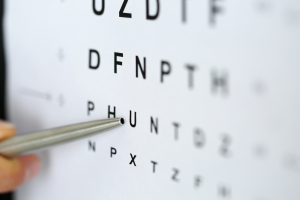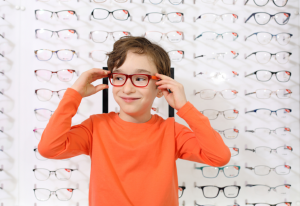
UV radiation, whether from natural sunlight or artificial UV rays, can seriously damage your eyes.
Most people probably understand the link between ultraviolet (UV) radiation and skin cancer. But many are less aware of the connection between UV radiation and eye damage.
With increased levels of UV radiation reaching the Earth’s surface, it is important to take the necessary precautions to protect your eyes.
What Is UV Light?
The sun’s primary danger to us comes in the form of UV light or radiation. UV radiation is a component of solar radiation. Artificial sources like welding machines, tanning beds, and lasers can also give off UV radiation.
There are three types of UV radiation. UV-C is absorbed by the ozone layer and does not present any threat. UV-A and UV-B radiation can have adverse long- and short-term effects on the eyes and vision.

How Does UV Light Affect Eyesight?
Both long- and short-term exposure to UV radiation can harm the eyes, affect vision, and compromise overall eye health. There are several eye diseases and conditions caused or aggravated by exposure to UV radiation, such as:
Macular Degeneration
Macular Degeneration (AMD) is caused by damage to the retina over time and is the leading cause of age-related blindness. Extended exposure to UV light increases your risk of developing macular degeneration.
Cataracts
A cataract is a clouding of the eye’s natural lens — the part of the eye that focuses the light we see. UV light, especially UV-B rays, increases your risk for certain types of cataracts. It is estimated that 10% of all cataract cases are directly attributable to UV exposure.
Pterygium
Often called “surfer’s eye,” pterygium is a pink, non-cancerous growth that forms on the layer of conjunctiva over the white of your eye. UV light from the sun is believed to be a factor in the development of these growths.
Skin Cancer
Skin cancer in and around the eyelids is also linked to prolonged UV exposure.
Photokeratitis. Also known as corneal sunburn or “snow blindness,” photokeratitis is the result of high short-term exposure to UV-B rays. Long hours at the beach or skiing without proper eye protection can cause this problem. It can be very painful and may cause temporary vision loss.
Who Is at Risk?

Everyone (including children) is at risk for eye damage from UV radiation that can lead to vision loss. Any factor that increases the amount of time you spend in the sun will increase your risk. If you answer yes to more than one of these questions, you may be at higher risk of UV radiation damage to your eyes:
- Do you spend long hours in the sun? (Skiing, mountain climbing, swimming, at the beach, etc.)
- Do you use a sunlamp, tanning bed or booth?
- Do you live in the mountains or the US Sunbelt?
- Have you had cataract surgery (in one or both eyes) or do you have a retinal disorder?
- Are you on certain medicines, such as tetracycline, sulfa drugs, birth control pills, diuretics and tranquilizers (that increase the eye’s sensitivity to light)?
- Are you a welder, medical technologist or do you work in the graphic arts or in the manufacturing of electronic circuit boards?
How Can You Protect Your Eyes from UV Light?
Know the dangers. UV rays can come from many directions. They radiate directly from the sun, but they are also reflected from the ground, from water, snow, sand and other bright surfaces.
Wear proper eye protection and hats to block the UV rays. To provide adequate protection for your eyes, sunglasses should:
- Block out 99 to 100 percent of both UV-A and UV-B radiation
- Screen out 75 to 90 percent of visible light
- Be perfectly matched in color and free of distortion and imperfection
- Have lenses that are gray for proper color recognition
If you spend a lot of time outdoors in bright sunlight, wrap around frames can provide additional protection from the harmful solar radiation. Lastly, don’t forget about protection for your children and teenagers, as they typically spend more time in the sun than adults.
